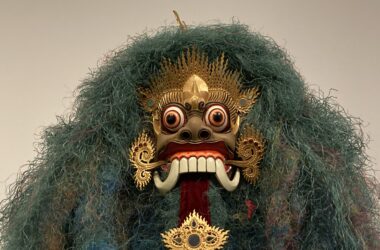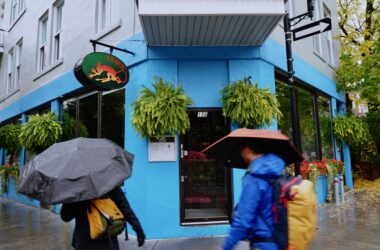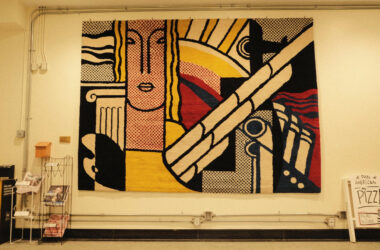As the sun set on a cold February evening, a dim glow warmed the room in Building 21 where McSWAY Poetry Collective hosted their second annual “Heartbreak Museum.” The exhibit featured poems and artifacts from past relationships, revealing a challenging portrait of heartbreak and young love, and explored both the highs and the lows of intimacy. Of course, the timing of the event couldn’t be more appropriate, falling on the evening before Valentine’s day.
“The timing is really symbolic,” Preksha Ashk, U3 Arts, and McSWAY executive said. “Not everyone is in a relationship [so] this is a really visceral way of visualizing and conceptualizing all the heartbreak that we’ve been through, at a time when we’re all thinking about it anyway.”
The three tables in the room were set with empty bottles of Bombay Sapphire gin, Smirnoff vodka, and a glow in the dark sweater, among other things. Poems were thoughtfully scattered throughout the space on sheets of white paper. One poem featured a screenshot of some text messages, all outgoing, reading: “hey / can we just like / talk about some stuff / I feel like there’s so much left unsaid and i’m so tired of feeling like that / like just over coffee or something.”
Much like the blue iPhone message bubbles through which many of us have poured our hearts out, the artifacts in the exhibit convey universal sentiments despite their personal and intimate nature. Nearly every item on display was preserved and held onto after a relationship ended, signifying a specific moment in the life of the romance. One wonders if the exhibit is more cathartic, or simply masochistic. Co-organiser Zeina Jhaish, U2 Education, explained that it depends on the viewer’s perspective.
“Art is subjective, you can take it as you like,” Jhaish said. “We try to create an atmosphere that’s not necessarily ethereal, but helps you get in your feelings.”
Both the poems and the artifacts revealed snippets of real, lived-in histories, inviting outside observers into the relationships of their owners. These snippets allowed viewers to flesh out narratives that often carry universal significance. After all, many of us have lent out sweaters and never gotten them back, or held onto a book that a partner recommended we read.
“If you take these things out of context, you can look at them objectively and figure out why there’s so much symbolism in a bottle of soda or in a sweatshirt,” said Ashk.
Even in a room filled with heartbreak, there is space for happiness. Almost everything on display was a memory, reminiscent of a time that has now passed. Perhaps calling the event “Heartbreak Mausoleum” would have been more apt. But, despite the talk of endings and broken relationships, the beauty of the exhibit lies in precisely in how much life each piece carries within it. Interacting with real objects, real conversations, and real memories makes each work feel alive, representative of things that have happened in the past, but that are also happening now, to different people, and will happen again.
Another sign of light—literal light—is a sun lamp, tucked into a nook by the windows facing Sherbrooke street. It was unclear whether the lamp is part of the room’s usual decor, or had been placed here for this specific event. Regardless, it felt significant—a symbolic ray of light peeking through in the depths of winter, in a room filled with bittersweet endings and lots of regrets, where all anyone wants is a little warmth.







